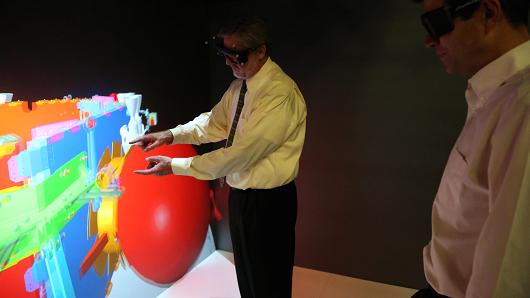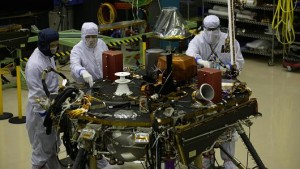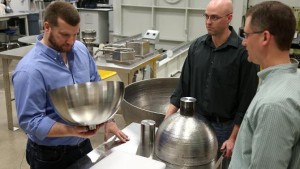3-D printing's latest creation: #Jobs #Business


3-D printing’s latest creation: #Jobs #Business
It is not rocket science, but understanding and implementing how 3-D printing, or additive manufacturing, can be used to make parts for satellites and other space systems is a discipline that is not yet fully understood.
“Additive is a new journey for us. It requires new skills, it requires a brand new education,” said Dennis Little, a vice president of production at Lockheed Martin Space Systems.
“In the days gone by in aerospace, most of our engineers — me included — were left-brained,” said Little. “We think in right angles and straight lines.”
With additive manufacturing, Little said, you have to think differently, adding curves to those straight lines and right angles. The engineers, he said, have to use both the left, or analytical side of the brain, and the right, or creative side.
“What sparks an interest in me is when a design engineer says the most perfect designs are those created by nature,” he said. “Because that tells me that the person understands that the future designs need to replicate more of what nature already has.”
“Key to our satellite business is where we can remove weight or mass from the satellite and lighten the load,” he said. “So, think of a satellite launching on a rocket. The rocket may not be as big as you have to have in past years, or you can fly a bigger payload.”
While it holds great promise, additive manufacturing makes up only a sliver of the total manufacturing output of the U.S., said Mark Cotteleer, research director at Deloitte Services. He said adoption has been slow given concerns about the quality of some of the products being printed, though a bigger barrier has been a lack of education about this technology in the workforce. He said managers are not clear on how employing additive manufacturing in their production line can improve them. Engineers have not been educated in now to apply 3-D printing to building products, and not enough technicians have a full understanding of how to service the machines and handle the composites used.
“The industry as a whole is relatively small, probably less than $10 billion per year,” he said. “But we’re seeing rapid growth, as fast as 20 percent to 30 percent per year with projections exceeding $20 billion by the time we get to 2020.”
That rapid growth is expected to translate into more jobs, if there are people trained to think and design in 3-D. It is an opportunity that Metropolitan State University of Denver has jumped on. Currently it offers two certificates, one in additive manufacturing and one in advanced composites or the materials used to create products on 3D printers. Next fall, it will be offer a four-year degree in advanced manufacturing, of which 3-D printing is a part.
“We are told constantly by our economic development office that they lose new companies coming to Colorado who are advance-manufacturing companies because they are told there is no workforce,” said the university’s president, Stephen Jordan.
Jordan decided his school could fill that gap. He reached out to the leaders of companies in the area, such as Lockheed Martin and United Launch Alliance, for their thoughts on how students should be trained. He then brought together six departments at the university that were vertically aligned — electrical engineering, computer science and mechanical engineering and the like — and asked them to create an integrated curriculum that applies their fields of study to advanced manufacturing.
With 70 students enrolled in the certificate programs, Jordan expects the number of students who sign up to pursue the four-year degree will be almost triple that number, and when they graduate, they will be in demand.
“We believe that not only will this initial 200 (students) be taken up very quickly, but that it’ll put a lot of pressure to grow the size of the program,” he said.
Based outside of Denver, in Littleton, Colorado, Lockheed’s space unit provides in-house training for engineers and technicians in 3D, but is excited about what MSU is doing
“I’m projecting about 120 production professionals are needed here in Denver … to fill our demand,” said Little. “We’ve got a university now that’s teaching advanced manufacturing along with engineering skills right in our backyard to fill our future pipeline and talent needs.”
That talent will be well compensated.
“Industry folks are very clear that the starting salaries for our graduates will be in the $60,000 to $65,000-a-year range,” said Jordan, whose school has over 23,000 students enrolled. “Which is well above the institution-wide average salary for our first year graduates of about $38,500.”
That’s a nice payoff for students who not only have the STEM skills manufacturers are looking for these days, but the vision and creativity to build a product from the inside out.






